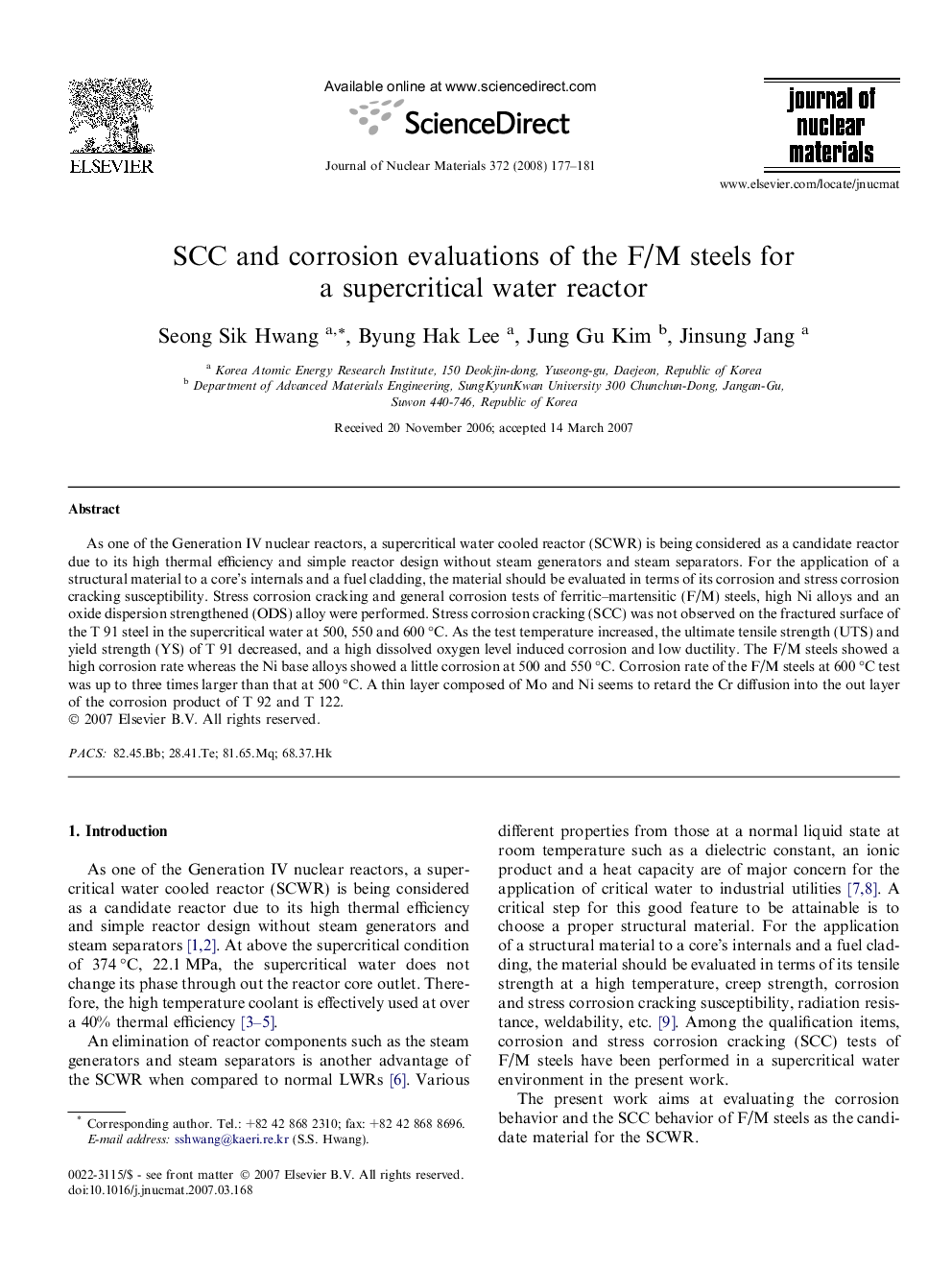| Article ID | Journal | Published Year | Pages | File Type |
|---|---|---|---|---|
| 1569002 | Journal of Nuclear Materials | 2008 | 5 Pages |
As one of the Generation IV nuclear reactors, a supercritical water cooled reactor (SCWR) is being considered as a candidate reactor due to its high thermal efficiency and simple reactor design without steam generators and steam separators. For the application of a structural material to a core’s internals and a fuel cladding, the material should be evaluated in terms of its corrosion and stress corrosion cracking susceptibility. Stress corrosion cracking and general corrosion tests of ferritic–martensitic (F/M) steels, high Ni alloys and an oxide dispersion strengthened (ODS) alloy were performed. Stress corrosion cracking (SCC) was not observed on the fractured surface of the T 91 steel in the supercritical water at 500, 550 and 600 °C. As the test temperature increased, the ultimate tensile strength (UTS) and yield strength (YS) of T 91 decreased, and a high dissolved oxygen level induced corrosion and low ductility. The F/M steels showed a high corrosion rate whereas the Ni base alloys showed a little corrosion at 500 and 550 °C. Corrosion rate of the F/M steels at 600 °C test was up to three times larger than that at 500 °C. A thin layer composed of Mo and Ni seems to retard the Cr diffusion into the out layer of the corrosion product of T 92 and T 122.
